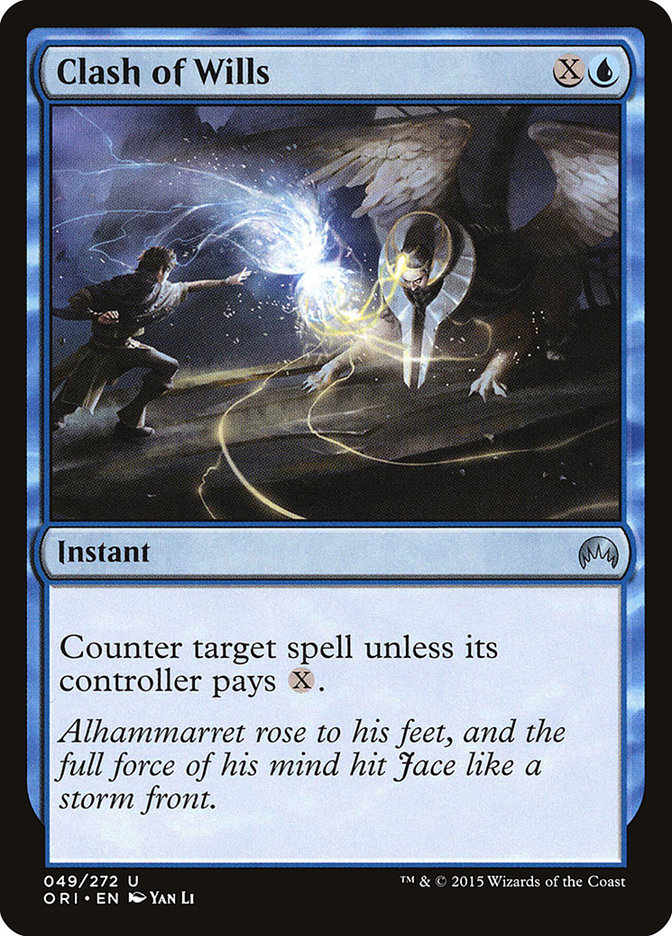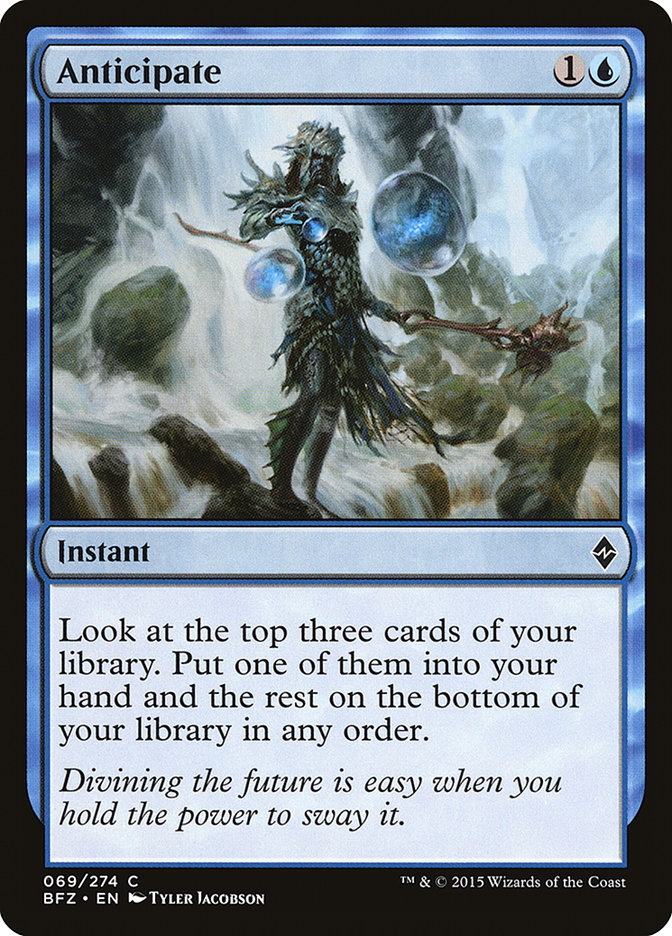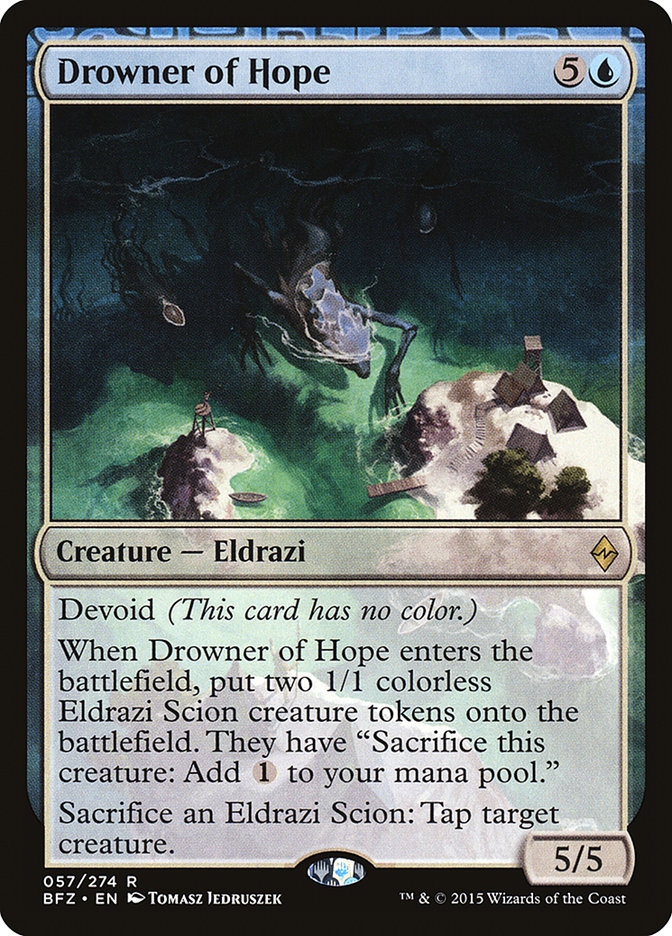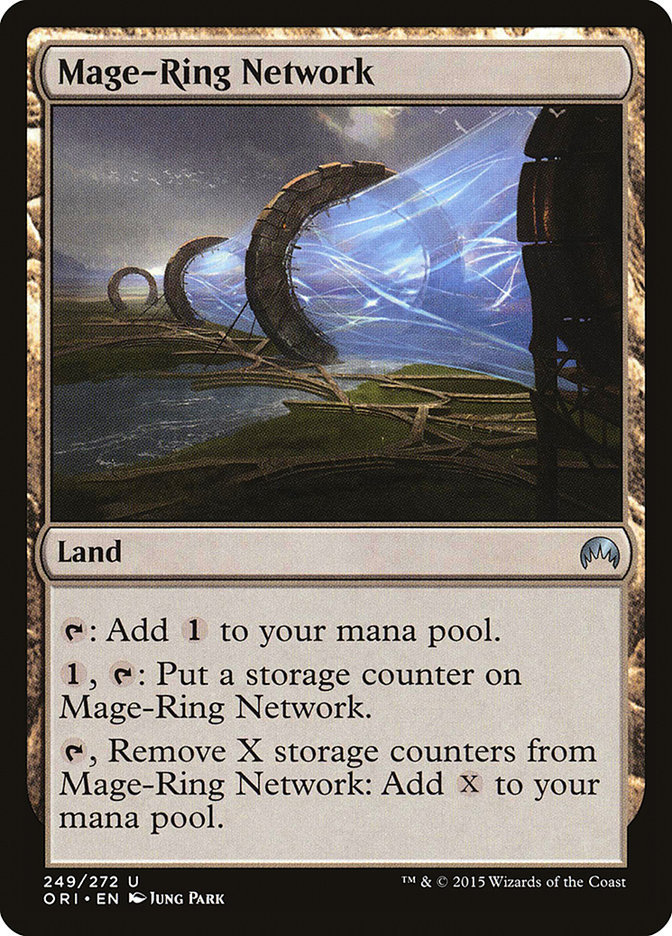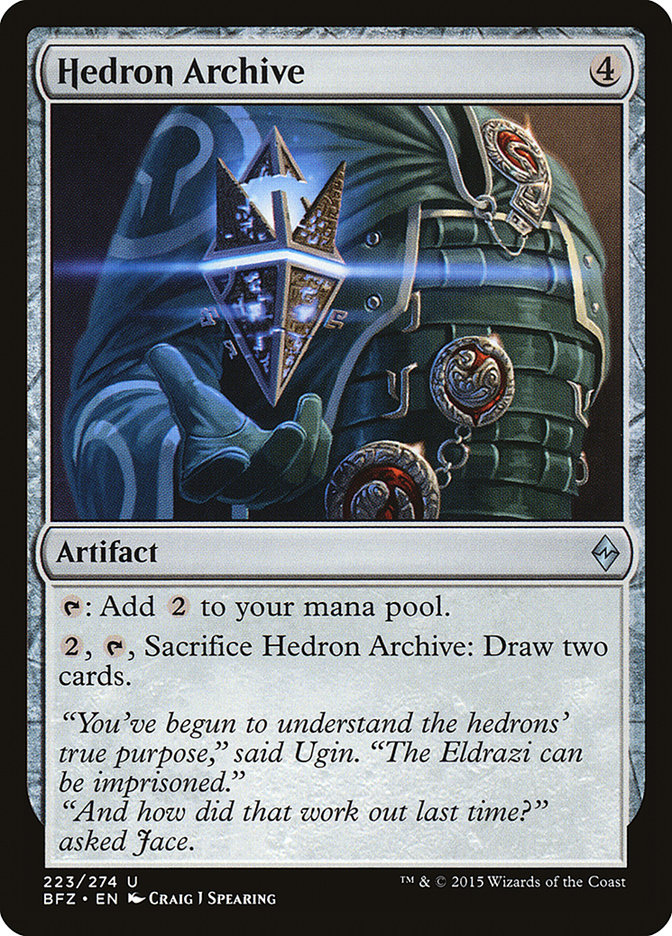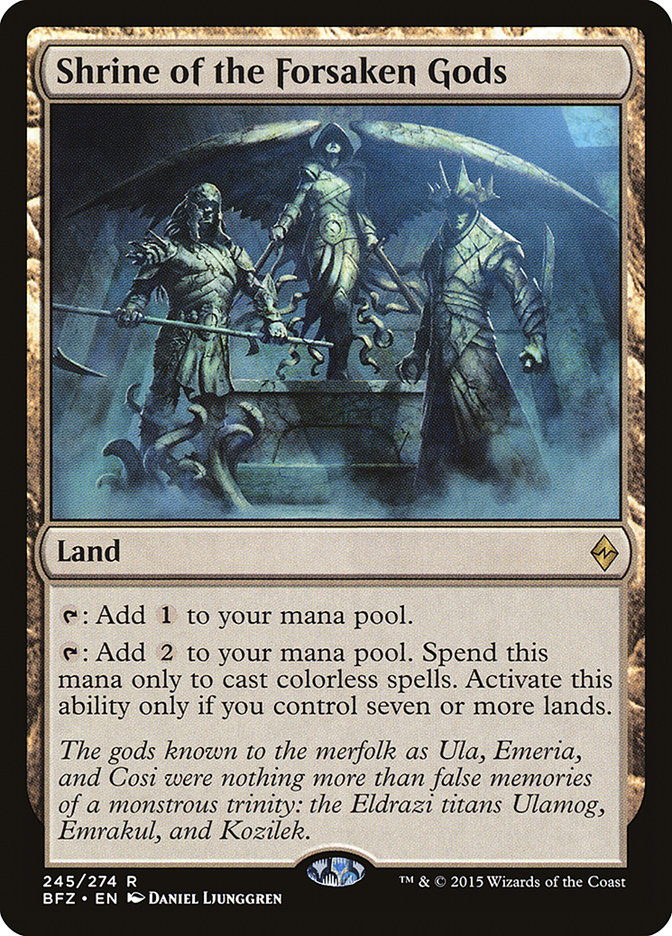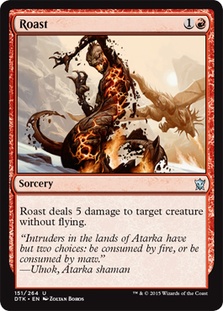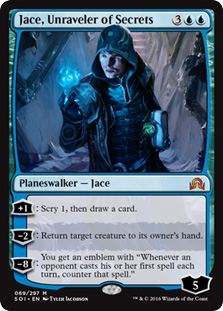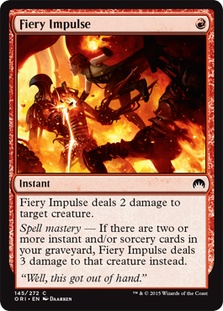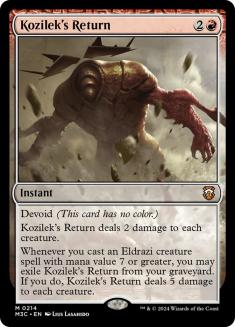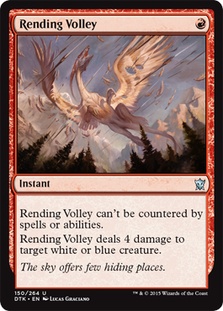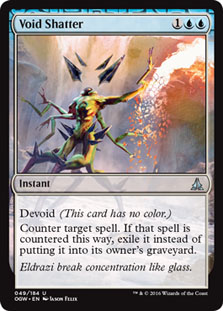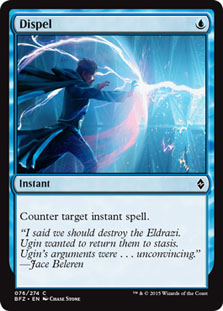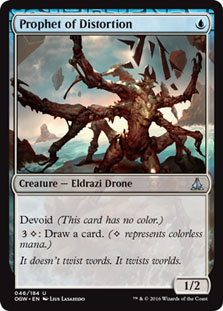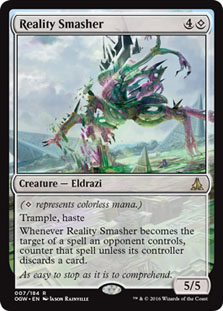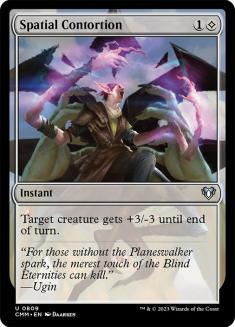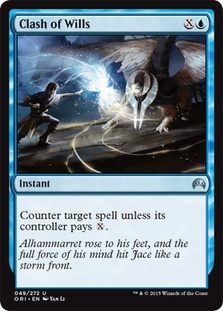So here’s the problem.
You love control decks, but they just don’t seem possible in Standard right now. Without a put-away card like Sphinx’s Revelation or Dig Through Time or a top-notch finisher like Elspeth, Sun’s Champion, you’re finding you just can’t seal the deal. This Standard format is full of extremely powerful singular threats like Gideon, Ally of Zendikar; Collected Company; and Archangel Avacyn that are all capable of just winning the game by themselves. If one slips through the cracks, you could be in big trouble.
Interestingly enough, with all these four- and five-mana cards defining the format, counterspells are actually very well-positioned right now. It’s hard to answer Gideon, Ally of Zendikar or Collected Company with one card because they are natural two-for-ones. As such, the format has adapted by almost every deck containing some of these midrange haymakers; you beat their planeswalker or Collected Company by slamming your own Gideon or Collected Company into them as hard as you can.
Counterspells like Clash of Wills and Void Shatter aren’t of the highest power level, but the ability to cleanly answer a Gideon or Collected Company is fantastic. Only one deck in the format, W/R Humans, is really playing enough one- and two-drops to reliably get under counterspells, and this makes them very potent in most situations. The issue is finding a deck that can play counterspells and still present a viable path to actually winning a game.
Enter Ulamog, the Ceaseless Hunger.
Creatures (7)
Planeswalkers (3)
Lands (27)
Spells (23)

At first glance, this deck looks like a disaster. Spatial Contortion; Jace, Unraveler of Secrets; Hedron Archive; Clash of Wills; Epiphany at the Drownyard; Drowner of Hope… the decklist reads like a B-list of Standard never-weres and has-beens. A Control/Ramp deck? What an absurd proposition! Frankly, I can’t really recall many times, if any, that a successful deck melded the axes of control and ramp together. Yet, as odd as it looks, Ulamog and friends are exactly what control needed to survive in this format.
Ulamog gives this deck the ultimate inevitability. All this deck needs to do is survive, and it will eventually cast an Ulamog and win the game. The traditional way to play against counterspell or removal-based control decks is to slow your game down; pace your spells, take your time, and pick the right spots to fight your battles. However, doing that is almost impossible against this deck.
Ulamog is always looming, and every turn you wait is another counter on Mage-Ring Network, and another land on the battlefield for Shrine of the Forsaken Gods. This means that your opponents will have to play their spells right into your counterspells, which is exactly what you want them to do anyway! A smattering of instant-speed removal helps to clean up what the counterspells can’t, and Kozilek’s Return ensures that the game is a done deal when Ulamog arrives.
One of the major differences between my list and others is that I play zero copies of Anticipate. I get a lot of questions as to why and it boils down to this:
Anticipate sucks.
The most important turns with this deck are turns 2 through 5, where you must use your mana every turn to make sure you can keep your opponent off the battlefield. You are almost never going to have time to use Anticipate unless your opponent isn’t pressuring you, which means you are in good shape anyway. Later in the game Anticipate can find you gas, but why not just put more good cards in your deck? If I have to Anticipate for a Void Shatter, I’ve spent five mana to counter my opponent’s spell. Anticipate is a waste of time and mana.
I’m also a proponent of Void Shatter over Spell Shrivel, as having a hard counter vastly outweighs being able to sometimes cast Spell Shrivel on turn 5 off an Island and a Hedron Archive. You can already make that play with Clash of Wills, and Void Shatter is always going to do what you want it to. Games go long, and your opponent having four mana lying around is going to happen.
Playing the Deck
First and foremost this is a control deck, not a ramp deck. While a ramp deck wants to play its huge threats as quickly as possible, this deck looks to extend the game as long as possible and then mop up with its huge threats. You do have sources of mana acceleration, but that’s more of a plan B than anything else.
The most important turns of the game are turns 2 through 5, where you must do everything you can to keep troublesome permanents off the battlefield. You do this with a combination of your spot removal spells, Kozilek’s Return, and of course your counterspells. Your counterspells are very valuable, and proper threat assessment is paramount to these early stages of the game. If you only have one Clash of Wills and your opponent plays a turn 2 Sylvan Advocate, usually you’ll need to just let it resolve and take some hits. That Clash of Wills will be necessary to answer the Gideon, Ally of Zendikar or Collected Company that is looming a few turns down the road.
Once you’ve hit turn 6, one of two things will have happened. Either things will have gone well and your opponent’s battlefield will be relatively clear, or your opponent will have a battlefield presence and be threatening to take over the game. In the first scenario you are in excellent shape. You can continue to play your control game while developing your manabase and building up to casting your big threats with counterspell backup if possible.
If your opponent has managed to slip a few things through, however, you can also just pivot and go into full-on ramp mode, tapping out for Hedron Archive and Drowner of Hope in an effort to just power your way through the mid-game.
Drowner of Hope is perhaps the best card in the deck because it excels so well at each of these roles. You can often use your extra mana to cast it with counterspell backup in the mid-game, but you can also just bomb it out on turn 5 or 6 to stem the bleeding if that needs to be done. Drowner of Hope provides seven power for six mana and is great at playing defense or pressuring planeswalkers if need be. Most importantly, it is rather hard to actually kill and does a great job of buying you the time you need to find a Chandra, Flamecaller or Ulamog, the Ceaseless Hunger to take control of the game again.
Having the option to turn to powerful haymakers like Drowner of Hope; Chandra, Flamecaller; and Ulamog, the Ceaseless Hunger if your plans go awry is what makes this deck a great option in the current Standard format.
While most of the control cards should be familiar to most players, the deck definitely has a number of quirks.
Mage-Ring Network is one of the most powerful cards in the deck and part of what makes your opponent have to play into you on your terms. Being able to charge it whenever your opponent does nothing is very powerful, but don’t think you need to get it up to four or five counters to cast Ulamog. A very common line is to charge on turns 2 and 3, and then on turn 4 remove two counters and cast a Hedron Archive with a U/R land untapped. This gives you access to both Clash of Wills for two and Kozilek’s Return on your opponent’s turn.
Aside from this sequence, Hedron Archive will usually not be a turn 4 play in this deck. To get the most out of Hedron Archive, you really want to be able to use the two mana it produces right away, and this often means mixing it with other spells in a single turn. Being able to play Hedron Archive and then tap it immediately for a Spatial Contortion is a good example of this. Also remember that Shrine of the Forsaken Gods taps for two mana for any colorless spell, not just creatures. This means you can use it for a surprise Kozilek’s Return, or to cast Hedron Archive or Spatial Contortion cheaply.
Matchup Guide
G/W Tokens – Even
While I would consider the G/W Tokens matchup even to slightly favorable, sometimes you are just going to get run over if they have their good Sylvan Advocate into Nissa, Voice of Zendikar into Gideon, Ally of Zendikar into Archangel Avacyn curve and you slip on having a counterspell. They can’t afford to wait around at all in the matchup, so their proper strategy is to just jam their cards on-curve and hope they resolve. If they don’t, you are a heavy favorite; if they do, you are a solid dog.
Most important cards: Drowner of Hope, counterspells
Sideboarding:
In:
Out:
While it seems odd to remove your sweeper against a deck with “Tokens” in the name, G/W is much more of a planeswalkers and good stuff deck, and it does very little to answer their early threats. It’s still nice to have one for late-games, however, and as an additional answer to Secure the Wastes.
W/R Humans – Unfavorable
On paper this matchup doesn’t look too good. Cancel has never been good against decks with tons of one- and two-drops, and you often won’t have the time you need to set up. However, you do have access to a good amount of spot removal, a number of maindeck sweepers, and a lot of help from the sideboard.
Most important cards: Spatial Contortion; Chandra, Flamecaller; Kozilek’s Return
Sideboarding:
In:
Out:
Post-sideboard, your plan is the usual control versus aggro plan: kill everything, play haymakers, win. Your countermagic mostly goes out the window as you will be tapping out often, but you have a few Clash of Wills to help deal with early threats, Always Watching, and Gideon, Ally of Zendikar out of the sideboard.
Bant Humans – Slightly Favorable
Bant Humans tries to go much bigger than the aggressive Humans decks, and this plays right into your strengths. While they will occasionally have a very fast draw when they draw the right mana, early creatures, and Thalia’s Lieutenants, for the most part they are significantly slower than their mono-colored counterparts, which gives you plenty of time to set up. They also have very few answers to your threats, especially Drowner of Hope.
Most important cards: Drowner of Hope; Spatial Contortion; Clash of Wills; Ulamog, the Ceaseless Hunger
Sideboarding:
In:
Out:
After sideboarding our deck gets much leaner and we can cut down on counterspells, as the only spells we really need to counter are Collected Company and Ojutai’s Command. Keep the battlefield clear and stall to the unstoppable Ulamog, the Ceaseless Hunger. On the draw, you can keep in the third Kozilek’s Return and cut a Negate.
Bant Company – Favorable
Bant Company is just a worse Bant Humans against you. They lose a ton of potential for aggressive draws, and the only thing they gain is Lumbering Falls. This matchup plays out similarly to Bant Humans but is slower and easier.
Most important cards: Drowner of Hope; Spatial Contortion; Clash of Wills; Ulamog, the Ceaseless Hunger
Sideboarding:
In:
Out:
Because they operate more of a slow, grindy, instant-speed game, you bring in a Prophet of Distortion to make sure you keep up on cards. Kozilek’s Return doesn’t kill enough of their creatures on the front side to be worth it.
W/B Control – Highly Favorable
W/B Control basically is on a Gideon-or-bust plan against you, and when you only have four cards in your deck that matter, you’re usually in trouble. They present no pressure at all, so just take your time, let their Read the Bones resolve, counter their important spells, and Ulamog, the Ceaseless Hunger them into next year. It’s also comical how hard it is for them to kill a Drowner of Hope, but don’t tap out for it (or anything) if you can help it.
Most important cards: Clash of Wills; Void Shatter; Drowner of Hope; Ulamog, the Ceaseless Hunger
Sideboarding:
In:
Out:
Counter their important spells, drop a win condition, win the game. Prophet of Distortion and Reality Smasher are amazing in this matchup, and one Roast is brought in to hedge against Thought-Knot Seer or Kalitas, Traitor of Ghet from the sideboard. Adjust accordingly.
Base-B/G Control – Favorable
This includes any sort of Seasons Past deck, Sultai Control, Abzan Control, and so on, as they all have the same core of cards. Because of their slow clocks, weakness to counterspells, and lack of good answers to your threats, these are all favorable matchups. They are also chock-full of worthless removal Game 1 that can hardly touch any of your threats.
Most important cards: Drowner of Hope; Clash of Wills; Void Shatter; Ulamog, the Ceaseless Hunger
Sideboarding:
In:
Out:
Sideboarding will depend on your opponent’s exact build, but for the most part, contain their relevant creatures, counter their relevant spells, and use your vastly superior end-game to put them away. Just watch out for Dragonlord Silumgar against Sultai. Reality Smasher is unnecessary as they don’t have many planeswalkers to attack and your threats are already extremely good against them.
Ulamog, the Insatiable Appetite
This deck is an excellent choice for anyone who’s been dying to play a control deck in this format and is fairly well-positioned at the moment. The deck is a bit odd to play, as knowing when to pivot from full control to threats can be a bit difficult, so make sure you get as many reps with the deck as possible. Also very important is threat assessment; you only have so many counterspells, so make sure you use them on the right things and at the right times.
The best part is that you are always drawing live. Ulamog, the Ceaseless Hunger solves all problems!
Challenge Thursday
We took last week off, but it was for a good cause… my new computer is here and now set up! I can’t wait to get streaming on my new rig, and the first stream with the new setup will be tonight’s Challenge Thursday.
Of course, we can’t have a Challenge Thursday without a vote, so here we go:
As always, the poll will end at 6:00pm Eastern time, which will give me one hour to construct my deck. Then you can tune in at 7:00pm for the start of the stream. I will be playing an entire League with the challenge deck, tweaking it a bit, and then playing another League right after.
How many wins can I get? Cast your vote and tune in to my stream at 7:00 tonight to see how it goes!


